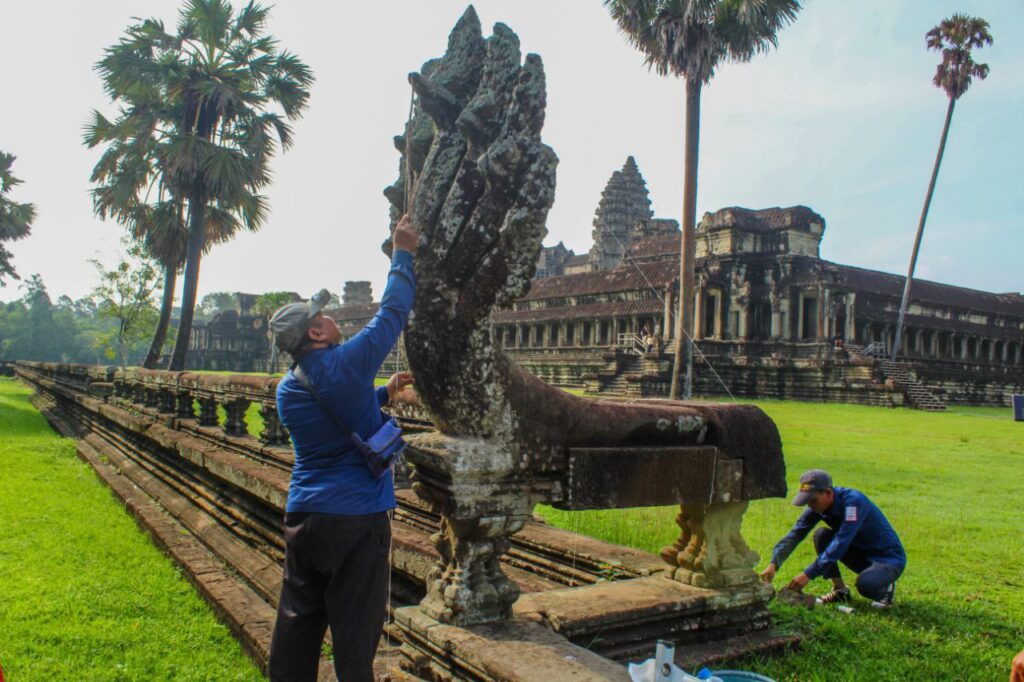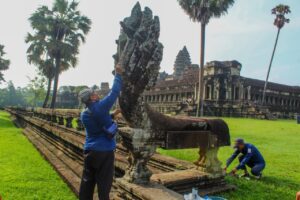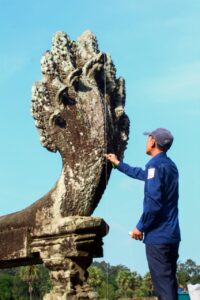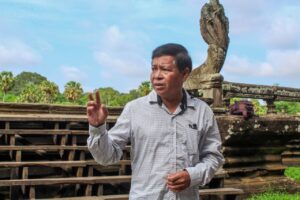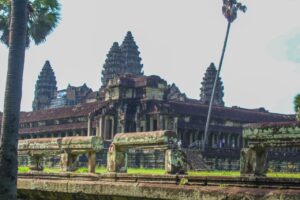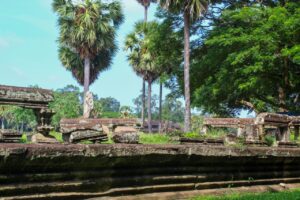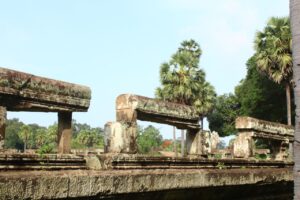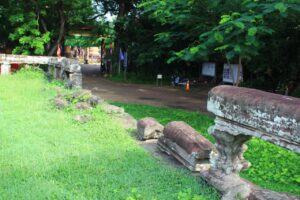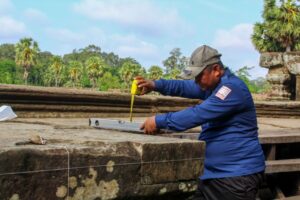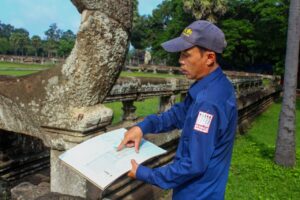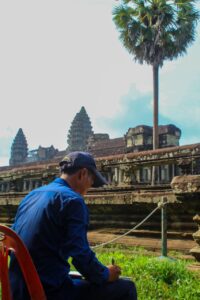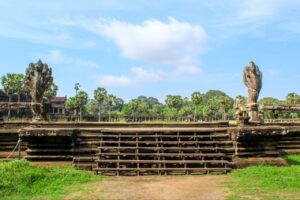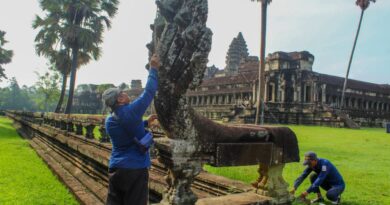ក្រុមអ្នកបច្ចេកទេសផ្នែកអភិរក្សថ្ម នៃអាជ្ញាធរជាតិអប្សរា ធ្វើការងារសម្រង់ប្លង់បង្កាន់ដៃនាគនៅខឿនជាន់ទី១ជុំវិញប្រាសាទអង្គរវត្ត ដើម្បីសិក្សានូវចំណុចហានិភ័យនៃរចនាសម្ពន្ធបង្កាន់ដៃនាគ មុននឹងឈានទៅដល់ការជួសជុលឱ្យរឹងមាំឡើងវិញ។
លោក សយ សុភារិន្ទ មន្ត្រីបច្ចេកទេសផ្នែកអភិរក្សថ្ម ឱ្យដឹងថា ការធ្វើសម្រង់ប្លង់បង្កាន់ដៃនាគនៅខឿនជាន់ទី១នេះ មានប្រវែងសរុប៩៥០ម៉ែត្រ។ ការបំពេញការងាររយៈពេល១២ខែមកនេះ សម្រេចលទ្ធផលបានប្រវែងជាង៤៥០ម៉ែត្រ។ កិច្ចការសម្រង់ប្លង់នេះ មានសារសំខាន់ដើម្បីសិក្សាពីស្ថានភាពហានិភ័យនៃរចនាសម្ពន្ធសំណង់បង្កាន់ដៃនាគ ចំណុចដែលមានហានិភ័យខ្ពស់ ចំណុចធ្លាប់ជួសជុលសម័យមុនជាដើម។ ជាលទ្ធផលនៃការសិក្សាឃើញថា បង្កាន់ដៃនាគ និងខឿនជាន់ទី១ជុំវិញប្រាសាទអង្គរវត្ត មានចំណុចមួយចំនួនទទួលរងនូវហានិភ័យខ្ពស់ ដោយថ្មបង្កាន់ដៃនាគមិនមានលំនឹង និងខឿនស្រុតជាដើម។ ដោយសារតែកត្តាអាយុកាលនៃសំណង់ កត្តាធម្មជាតិ ទឹកហូរច្រោះ និងសត្វល្អិតជាដើម។
បន្ទាប់ពីធ្វើសម្រង់ប្លង់រួចរាល់ អាជ្ញាធរជាតិអប្សរា មានគម្រោងជួសជុលពង្រឹងបង្កាន់ដៃនាគនេះទៅតាមដំណាក់កាលជាបន្តទៀត។ អ្នកជំនាញរូបនេះ បញ្ជាក់ថា កាលពីអំឡុងឆ្នាំ២០២២-២០២៣ អាជ្ញាធរជាតិអប្សរា បានជួសជុលពង្រឹងបង្កាន់ដៃនាគ និងខឿនជណ្ដើរ នៅទិសខាងត្បូងរបស់ប្រាសាទអង្គរវត្ត បានជោគជ័យរួចមកហើយ៕
អត្ថបទ៖ ឆាយ ផាន់នី
រូបភាព៖ លោក ស៊ិន ប្រណី
The APSARA National Authority is currently engaged in preparing a risk map for the Naga balustrades surrounding the first floor of Angkor Wat temple. This initiative is part of a broader effort to assess and enhance the structural integrity of these significant architectural features before undertaking restoration work.
According to Mr. Soy Sophearin, a technical officer for stone conservation, the Naga balustrades extend over a length of 950 meters on the first floor of Angkor Wat. The mapping and assessment process has been ongoing for the past 12 months, with over 450 meters of the balustrades already evaluated. This assessment is crucial for identifying high-risk areas, previously repaired sections, and overall risk factors affecting the structure.
The study revealed that certain sections of the Naga balustrades are at high risk due to various factors, including the natural aging of the materials, environmental influences, water erosion, and insect damage.
Once the risk assessment and design phase are complete, the APSARA National Authority plans to proceed with a phased restoration and strengthening of the Naga balustrades. Notably, during 2022-2023, significant progress was made in restoring both the Naga balustrades and the staircase on the southern side of Angkor Wat.
Article by Chhay Phanny
Photos by Sin Broney
Translation by Net Phirun

